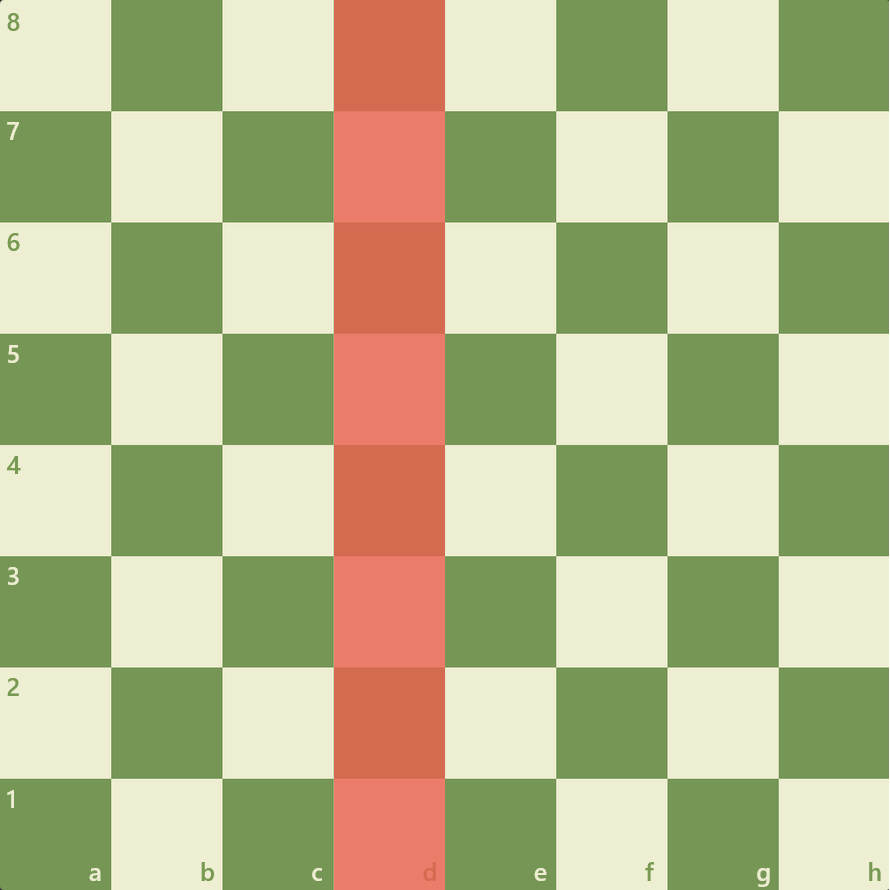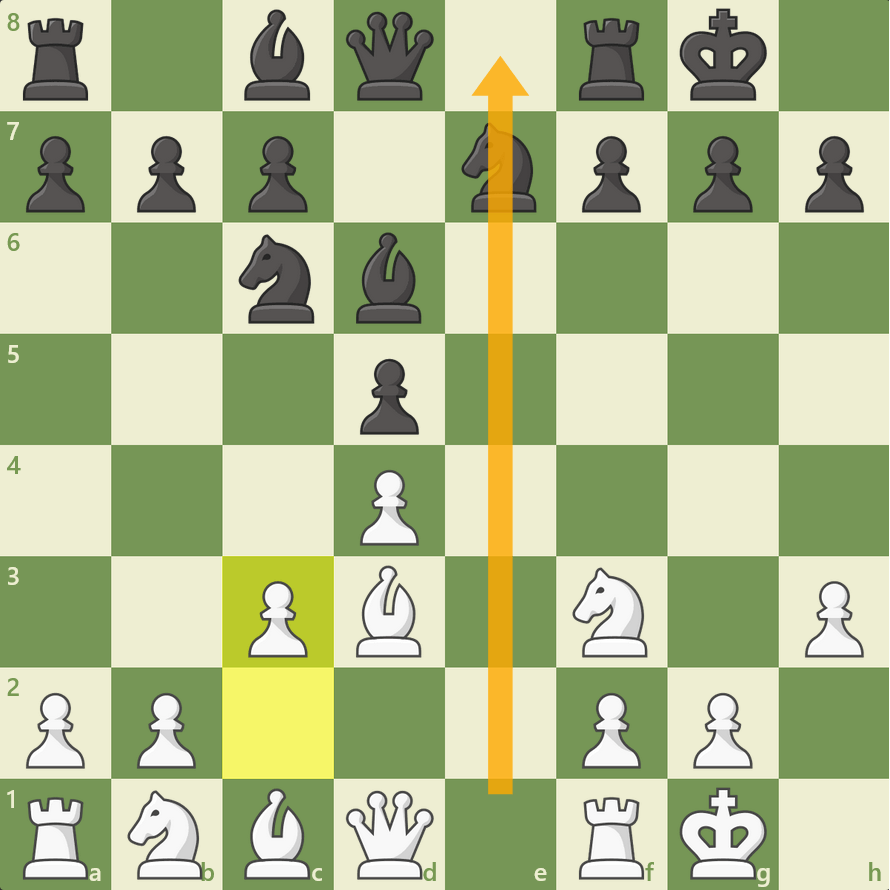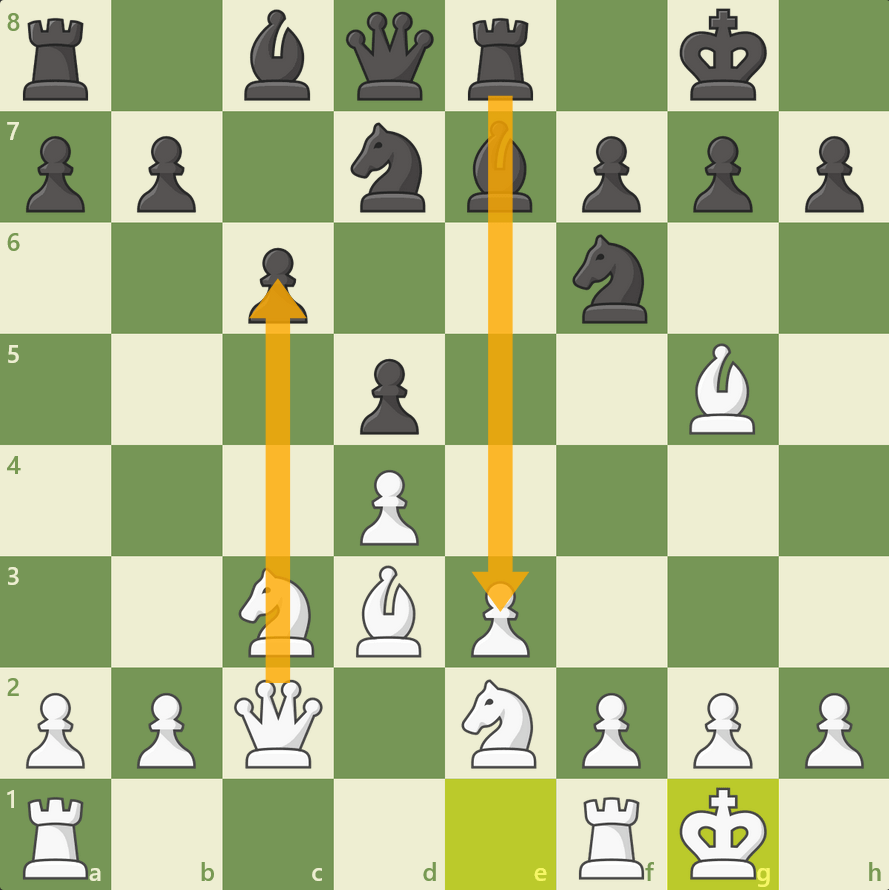
File
As you learn the game of chess, you encounter a lot of new terms! Although easy to understand, the term "file" is very significant because it's necessary for every game. Let's see what a file means in chess!
Here is everything you need to know about a file in chess:
What Is A File In Chess?
A chessboard is made up of 64 alternating, colored squares on an 8x8 grid; each vertical row (or column) is called a file. Each file has an alphabetical assignment (a through h). Below you can see the d-file highlighted.

Files can be referred to as open, semi-open, or closed. If there are no pawns on a file, then the file is considered open. Below you can see that the e-file is open.

If just one pawn is on a file, it is considered semi-open for the player without a pawn on that file. In the position below, the c-file is semi-open for White, and the e-file is semi-open for Black.

A file with two (or more) pawns is considered closed. In the following position, all of the files are closed since two pawns are on each one.

Now that you know what a file is, let's find out why files are important!
Why Are Files Important?
Files are significant for two reasons. First, they are important for notating or reading games. In addition, in a game, heavy pieces (rooks and queen) seek special files that are described in this section.
In chess notation, a file is used to designate every square, which has an alphanumeric name. In addition, the file is required to record each move. In the following position, White has just played Bb5:

The "B" stands for the piece, which is a bishop, and "b5" refers to the square. The b5-square is on the b-file and the fifth rank.

In a game of chess, files are fought for by rooks and queens. Because they move up or down vertically as many squares as they can, open and semi-open files are very important for these pieces. In the following example, White controls the only open files with their rooks:

The white rooks are more active than the black rooks and threaten to infiltrate Black's position by moving to the seventh rank.

The rooks are even more active on the seventh rank! Note that controlling the seventh rank would not be possible without first controlling the open files.
Test
Now that you know what files are and why they are important, let's test your ability to take control of a file! In the following position, it is White to move. Is there an open file? If so, how can White take control of it?

Yes! Rb1 takes control of the open b-file. White can now double their rooks on the b-file and then infiltrate Black's territory! Let's try one more! In the following position, White has full control of the e-file.

After Black plays Qh3, how can White use control of the e-file to deliver checkmate?

Yes! Re8+ leads to checkmate! After a few captures on the e8-square, White delivers checkmate! Very good!

Conclusion
You now know what a file is, why files are important and how to take control of them! Use this new knowledge in your own games and may you control many open files!







